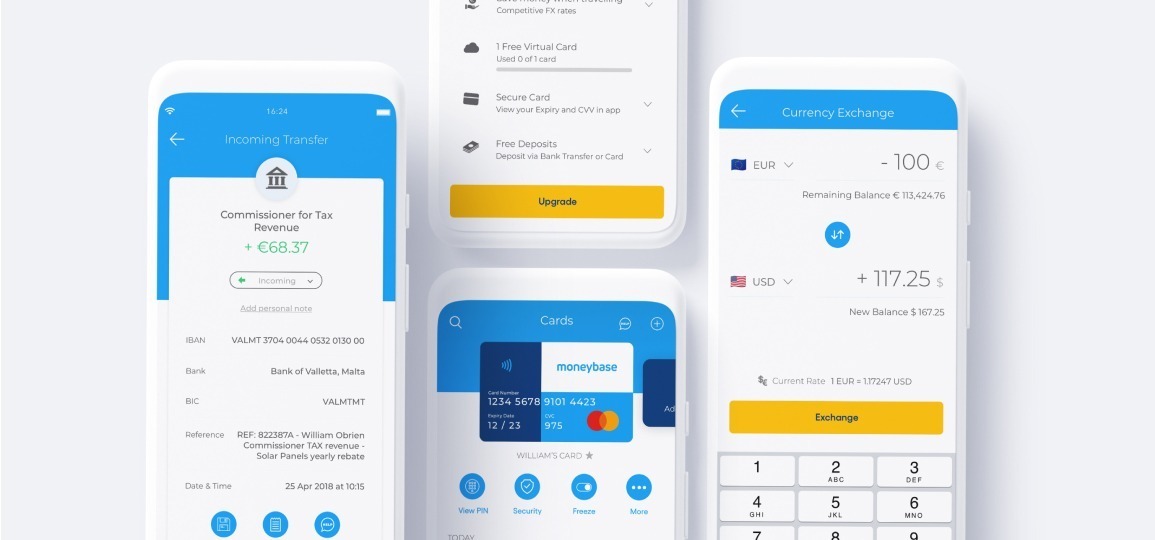From substantially increasing investors’ profits to providing an extra metric for fundamental analysis, reducing overall portfolio risks and helping to preserve the purchasing power of capital, there are several reasons why dividend stocks are important to investors.
And companies that not only have generated strong profits and have grown their earnings year after year, but also boast a long history of uninterrupted and undiminished dividends that stretch back at least a century, belong in every income investor’s portfolio.
Known as dividend zombies, below is a list of these top-performing companies and their stock.
What are dividend zombies?
As mentioned above, dividend zombies are stocks with over 100 years of consecutive dividend growth. Providing higher yields, as well as dividend safety when compared with your average dividend stocks, dividend zombies are considered extremely reliable payers. What’s more, these companies typically have stable business models, quality balance sheets, rising cash flow and reasonable valuations.
How are Dividend Zombies selected?
To become Dividend Zombies companies must have increased their dividends for 100 or more years with no interruptions. When considering the various scenarios that could take place within a 100 years, this is certainly a difficult feat to accomplish and a result, just a handful of stocks typically make the cut.

Top Dividend Zombies
Colgate-Palmolive Company (CL)
With roots dating back to 1806, making it one of the oldest companies in the US stock market, Colgate-Palmolive is specialised in the production, distribution and provision of household, health care, personal care and veterinary products. Founded by William Colgate originally as a starch, soap and candle business in New York City, today the multinational consumer products company has become a global giant with a product portfolio that includes major brands, such as Colgate, Palmolive, Hill’s Science Diet and many more, while its products are sold in over 200 countries and territories across the globe.
In the end of January 2021, the company reported fourth quarter and full-year earnings, with results coming in ahead of expectations on the top and bottom lines. Total revenue was up 7.5% year–over–year during Q4 of 2020, topping $4.3 billion as organic sales growth was strong, up by 8.5%, far exceeding the consensus of 5.4%. More recently, the company reported its second quarter fiscal 2021 financials, pulling in net sales of $4.26 billion, up 9.5% on the previous year, marking the highest net sales increase for the company in almost ten years.
Impressively, Colgate-Palmolive has managed to pay uninterrupted dividends since 1895, while it boasts a long history of dividend increases, thanks to its strong brands and dominant position across multiple product categories.
With a number of competitive advantages that have fuelled its growth over the past 200 or so years, the company has built a dominant position in its core product categories, which means that its market share price has also risen. In turn, this has increased its pricing power. A high-quality business, with growth potential through its product innovation, its celebrated pet food brand, as well as growth in the emerging markets, Colgate-Palmolive is set to maintain its title of Dividend Zombie for many more years to come.
Add Colgate-Palmolive (CL) stock to your portfolio.
Consolidated Edison Inc. (ED)
Founded in 1829 as the New York Gas Light company by a consortium of investors, today Con Edison or ConEd as it is commonly known, operates one of the world’s largest energy delivery systems, whereas its electric, gas and steam service provides energy to the 10 million people living in New York City and Westchester Country. A large-cup utility, the company generates approximately $12 billion in annual revenue and has a market cap of $26.32 billion as of October 18, 2021.
Much of 2020 was characterised by ups and downs in the utility company’s financials. For the year’s fourth quarter, revenue grew by 0.3% to $2.96 billion, however, it missed estimates by $190 million. Meanwhile, adjusted earnings of $4.18 per share, declined 4.6% from 2019. In contrast, total electric revenues improved 2% and 0.4% for the quarter and year respectively.
With the gradual improvement of the U.S. economy, ConEd continued its pattern of growth in 2021. Indeed, for its second quarter of 2021, it reported net income for its common stock at $165 million or $0.48 a share compared with $190 million or $0.57 a share in the 2020 second quarter. On the other hand, adjusted earnings were $182 million or $0.53 a share in the 2021 period compared with $201 million or $0.60 a share in the 2020 period.
A consistent dividend paying stock like no other, the company counts over 100 years of steady dividends and 47 years of annual dividend increases. And as for its competitive advantage, the high regulatory hurdles of the utility industry means that it is far harder for new competitors to enter the market, while electricity and gas service are both necessary and vital to consumers, so demand will not wane. Notably, its healthy balance sheet and strong business model has helped provide security to Consolidated Edison’s dividends and as a result, investors should expect small increases each year.
Click here to buy Consolidated Edison (ED) stock.
General Mills Inc. (GIS)
From Cheerios, Yoplait and Nature Valley to Haagen-Dazs, Betty Crocker and Pilssbury, General Mills is a leading global food company with more than 100 brands available in more than 100 countries. With a current market cap at $37.65 billion, it has been consistently paying its dividend for 119 consecutive years, while around 85%of its total sales is generated from demand of its at-home food. In effect, the packaged food giant has grown its earnings per share at a 4.5% average annual rate in the last decade and despite this decelerating somewhat in recent years, General Mills is nonetheless managing to grow its earnings per share at a rate of 2.6% annually in the five years up to 2019 and before the tailwinds it enjoyed from the pandemic.
With people seeking safe refuge at home, for the full fiscal 2021, General Mills posted record earnings per share thanks to a surge in at-home food demand. On releasing its quarterly earnings results on September 21 of this year, the company reported $0.99 earnings per share, topping the consensus estimate of $0.89 by $0.10. Other factors that also contributed to these headwinds include the numerous waves of panic shopping which boosted its sales particularly of products like Cheerios cereal, Yoplait yogurt and Haagen-Dazs ice cream. In addition, investors flocked to buy defensive stocks with high dividend yields, driven particularly by the U.S.-China trade war and unemployment rates caused by the pandemic. On the other hand, its stock was trading at $52.87 on March 11, 2020 when COVID reached pandemic status, however, shares have since increased by 17.6%, currently trading at $62.21 on October 18, 2021.
And in true dividend zombie fashion, on June 29, 2021, the company’s board of directors declared a quarterly dividend of $0.51 per share, which represents a 4% increase from $0.49 per share paid a year ago. Cementing its safe-haven nature during the COVID-19 crisis, it is yet to be seen whether there will be any adverse effects as the pandemic subsides and whether this will bring a decrease in demand for at-home food.
Interested to invest? Click here to add General Mills (GIS) to your portfolio.

The Coca-cola Company (KO)
Founded in 1892 and quenching people’s thirst ever since with its wide variety of beverages, the Coca-Cola Company has become an iconic brand and the world’s largest beverage company with more than 500 unique names under its wing. Its portfolio includes its flagship Coca-Cola brand, together with other big soda names, such as Sprite, Fanta, Diet Coke and others, as well as its still beverage portfolio, which consists of Dasani, Minute Maid, Honest Tea and Vitamin Water, to name a few.
The company reported an increase of 5% in first-quarter net revenues for 2021, reaching $9 billion, while organic revenues (non-GAAP) grew 6%, which was driven by a 5% growth in concentrate sales. Adjusted earnings per shares also increased 8% for the quarter. At the same time, in an attempt to emerge from the pandemic stronger than before, it doubled its year-over-year marketing spend for the second quarter of 2021 and results have been favourable. The company rebounded from last year’s pandemic-battered quarter, while it saw revenues and earnings surpass those of Q2 2019. More specifically, net revenues grew 42% to $10.1 billion and earnings per share grew 48% to 0.61%. In addition, the beverage giant has gained value share in total non-alcoholic ready-to-drink beverages (NARTD), driven by a share gain in both at-home and away-from-home channels, so much so that its value share in total NARTD has surpassed the 2019 level.
A time-tested dividend zombie, it has raised its dividend for 59 consecutive years, even during challenging operating environments, which makes this feat even more impressive. Thanks to its global competitive advantages, its recession-resistant business model, as well as its expansion into juices and teas to cater to a more health-conscious consumer base, the Coca-Cola Company is a mega-cap stock and one of the steadiest and most reliable dividend payers among blue-chip stocks.
Have a look at why Coca-Cola is the greatest beverage company of all time and click here to make Coca-Cola (KO) stock yours.
The Procter & Gamble Company (PG)
A consumer products giant that sells its merchandise in more than 180 countries and generates over $70 billion in annual sales, Procter & Gamble or as it is more commonly referred to, P&G, is one of the most widely known dividend stocks, largely due to its long dividend history and widely recognised brands. With a portfolio that include big names like Gillette, Tide, Crest, Pampers, Head & Shoulders, Bounty and Oral-B, to name a few, this is another time-tested dividend growth company, which has paid its shareholders for 130 years, while it has increased its dividend payouts for a staggering 64 consecutive years.
With a market capitalisation of $340.80 billion as of October 25, 2021, the company qualifies as a mega-cap stock. And things have been looking brighter after it completed a major overhaul of its product portfolio, selling dozens of its consumer brands that were no longer considered necessary. For instance, it sold battery brand Duracell to Berkshire Hathaway for $4.7 billion, while it sold a collection of 43 beauty brands to Coty (COTY) for $12.5 billion. The slimmed down portfolio made P&G more efficient, with lower costs and higher margins.
Seeing renewed growth potential, for fiscal year 2020 net sales amounted to $71 billion, an increase of 5% when compared to the previous year. On the other hand, core earnings per share were $5.12, an increase of 13% versus the previous year, driven by an increase in net sales, as well as in core operating profit margin. More recently, in its latest earnings beat on July 30, 2021, the company’s net sales rose 7% to $18.9 billion from $17.7 billion a year earlier, beating Wall Street expectations. Organic sales also climbed 4%.
Thanks to its strong brand portfolio of items that everyone needs regardless of the economic climate, the company has managed to remain profitable even during the most adverse of years. This coupled with its other growth catalyst, acquisitions, could potentially mean that P&G is in the right position to offer shareholders great returns.
Add Procter & Gamble (PG) to your portfolio today.
PPG Industries Inc (PPG)
A Fortune 500 company, PPG Industries was originally founded in 1883 as a manufacturer and distributor of glass. In fact, the name stands for Pittsburgh Plat Glass, however, over time it has made remarkable strides, becoming an industry leader in the paints and coatings industry. Operating in more than 70 countries around the world, it is regarded as one of the largest coatings companies in the world by revenue, with its only competitors of similar size being the likes of Sherwin-Williams (SHW) and Dutch company Akzo Nobel (AKZA).
PPG Industries outperformed in 2020, with fourth quarter and full-year earnings showing growth against the same period a year ago. Revenue was up 2.5% to $3.8 billion, while earnings per share were up also 21% to $1.59. Meanwhile, its revenue for the twelve months ending June 30, 2021 was $15.682 billion, a 12.9% increase year-over-year. In particular, for its second quarter 2021, net sales reached approximately $4.4 billion, nearly 45% higher than the prior year, while selling prices increased by 3.5% and sales volumes were higher by approximately 24% in comparison to the previous year.
Just like many of its fellow Dividend Zombies, acquisitions have been key growth drivers for the company for several years. In 2020 alone, it spent $1.2 billion on acquisitions and is well on its way to match that so far in 2021. This means that the company has managed to move away from legacy businesses, predominantly glass and chemicals, leaving it with an impressive portfolio of coatings products.
At the same time, PPG’s remarkable dividend consistency gives it a broad appeal particularly to more conservative investors looking for dividend growth. And bearing in mind its strong business model and the fact that it has grown its earnings per share at an average rate of just over 5% in the past decade, it could still have room for steady annual dividend increases.
Interested to invest? Click here to add PPG Industries (PPG) to your portfolio.

Stanley Black & Decker Inc. (SWK)
A mash-up of some of the biggest power tools manufacturers across the globe – Stanley Works and Black & Decker – the company was established after the former acquired the latter in 2009.Today, Stanley Black & Decker has become a favourite of DIY fans, after having steadily grown into one of the world’s largest industrial products manufacturers, selling a number of tools and related accessories, while it also produces electronic security solutions, healthcare solutions and engineering fastening systems.
With 144 years of uninterrupted dividends and 53 consecutive annual dividend increases, Stanley Black & Decker is regarded as a relatively safe dividend investment. Its growth prospects are also very promising. Full-year 2020 revenues grew 1% to $14.5 billion, while the company has stated that organic growth in 2021 is expected at a range of 4% to 8%, whereas total revenue should be in the double-digits. Indeed, on July 27, 2021, Stanley Balck & Decker reported record second-quarter results, with revenues totalling $4.3 billion, up 37% from last year and all segments growing double digits.
The company has also been big on acquisitions in recent years which has further strengthened its foothold in tools. For example, it has added high-quality brands such as Irwin and Lenox to its portfolio, while it has acquired well-known Craftsman brand from Sears Holdings for $900 million. And according to management, looking long-term, it is planning to continue growing by investing in its Industrial segment, which is on track to generate 25% of total revenue by 2022.
Boasting all the qualities of a strong dividend growth stock, Stanley Black & Decker has marked a positive momentum to the year so far, which together with its competitive advantages of its brand portfolio and global scale, the company is likely to continue hiking its dividend for the foreseeable future.
Make Stanley Black & Decker (SWK) stock yours by heading over to Moneybase Invest.
Exxon Mobil Corporation (XOM)
The largest oil company in the U.S., Exxon Mobil traces its roots to Standard Oil which was founded by business magnate John D. Rockefeller back in 1870. Since then, the company has transformed from a regional refiner and distributor of kerosene to the largest publicly traded petroleum and petrochemical enterprise in the world. Yet, oil and gas are typically considered a so-called boom-and-bust- industry, where profits are usually highly dependent upon commodity prices, which can fluctuate depending on the supply and demand. Exxon Mobil has been the exception to this rule and with a 6% dividend yield and a quarterly dividend at $0.87, it is considered a high-yield stock.
In direct competition with supermajors like Royal Dutch Shell (RDSA) and BP (BP), as well as state-owned giants Sinopec (SHI) and Saudi Aramco, 2020 has probably been one of Exxon Mobil’s least favourable years since its founding, with operating revenue amounting to approximately $178.6 billion, markedly lower when compared to 2019’s $255.6 billion. According to the company, the pandemic, together with oversupply were cited as the top reasons why the company had to weather such a challenging financial year. Since then, things have turned around. At the end of July 2021, Exxon Mobil posted its biggest quarterly profit in more than a year, which also beat analysts’ estimates, mainly boosted by higher oil prices and record earnings at its chemicals business. In addition, the company managed to cut debt by $2.7 billion, while it backed shareholder returns through dividend.
Boasting an industry-leading balance sheet, as well as a good credit rating of AA+, the company also has several growth opportunities. Thanks to its promising growth pipeline, Exxon Mobil expects to grow its production to 3.7 million barrels per day by 2025. It is also investing in higher-quality projects, which will help grow its profits.
Interested to invest? Buy XOM stock on Moneybase Invest.
How to invest in Dividend Zombies
Ready to invest in these Dividend Zombies? Your first step to tapping into a world of investment opportunities with Moneybase Invest is to sign up and open an account.
To do so:
- Download the app from either Google Play or the Apple App Store. Alternatively, you may access Moneybase Invest on your desktop by visiting https://live.cctrader.com/
- Once you’ve onboarded successfully and have funded your account, head over to the search bar at the top of your screen and input either the company name or ticker symbol.
- Select the instrument of your choice from the list and then click on the Buy button on the window located at the bottom of your screen.
- On the New Order page, input the number of shares you would like to purchase and hit the Place Buy Order. The stock has been added to your portfolio.
Access over 20,000 Stocks, ETFs, Bonds & Funds and over 4,300 fractional US shares and ETFs on our award-winning platform, with no hidden fees and instant market execution.
Moneybase Invest is brought to you by Calamatta Cuschieri Investment Services Ltd and is licensed to conduct investment services business by the MFSA under the Investment Services Act.
Moneybase Invest offers direct market access and speed of execution and is intended for knowledgeable and experienced individuals taking their own investment decisions. The value of investments may go up and down and currency fluctuations may also affect investment performance.
The contents of this article are not intended to be taken as a personal recommendation to invest but strictly based on research and for information purposes only. Retail investors should contact their financial adviser for a suitability assessment prior to taking any investment decisions.





